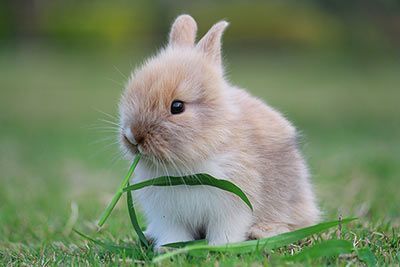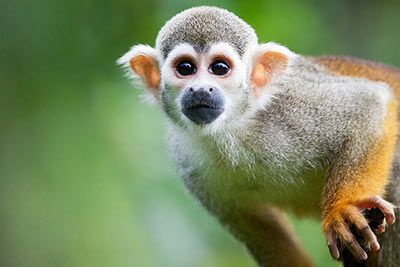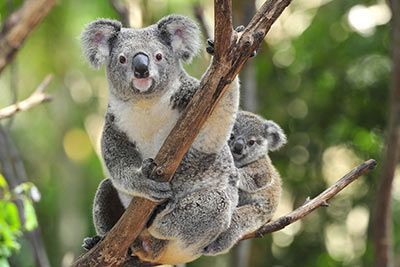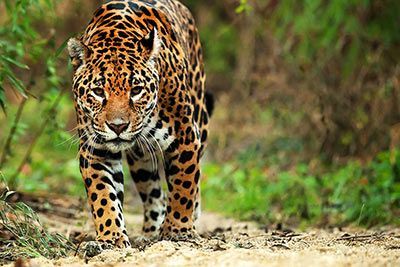African Elephant
African Bush Elephant Facts
| Size | Up to 13 feet (3.96 meters) |
| Speed | Up to 24 mph (40 km/h) |
| Weight | Up to 6 tons |
| Lifespan | 60-70 years |
| Food | Plants, fruit, roots |
| Predators | Crocodiles, lions, hyenas |
| Habitat | African steppe |
| Order | Proboscidea |
| Family | Elephantidae |
| Scientific name | Loxodonta africana |
| Characteristics | Trunk, tusks, large ears |
Main Characteristics
The African elephant is the heaviest land mammal in the world. It is also the second tallest land animal after the giraffe. Its two "relatives", the Asian elephant and the African Forest elephant are a little smaller and lighter. Its most striking features are its large ears, its trunk and its tusks.

Anatomy and Appearance
Weight
Elephants are the heaviest mammals to live on land. A fully grown male elephant can weigh up to six tons. That's roughly the same as six small cars. A hippopotamus “only” weighs up to 4.5 tons and a rhinoceros 3-4 tons. There are mammals, which are much heavier than the African Elephant, but they don't live on land. They live in water, for example the whale shark or the blue whale.
Size
Elephants reach a height of 13 feet (3.96 meters), which is almost the length of an average small car. To imagine it, you just have to turn it 90 degrees in your mind. There is only one animal larger than the elephant: the giraffe. It grows 18.7 feet (5-6 meters) tall.
Trunk
An elephant's trunk is both an upper lip and a nose. There are no bones in the trunk, but there are eight large, powerful muscles.

Ears
The African steppe elephant has huge ears. They grow up to 6-7 feet (2 meters) long. They look a bit like the outline of Africa.
Tusks
African elephants have very long tusks. They grow to over 6-7 feet (2 meters) long. The tusks evolved from incisors and are also called ivory. Even though it is strictly prohibited, elephants are still hunted down by poachers because of the ivory.
Molar Teeth
The elephant needs its molar teeth to grind plant food. They have five sets of molars – six sets if you also count milk teeth. While our third set consists of false teeth, elephants still can go on munching happily.
Skin
Is It True That Elephants Are "Thick Skinned"? Elephants are often called thick-skinned animals. Their skin is indeed thicker than ours. Ours is only a few millimeters thick, while the elephant’s skin measures about 0.8 inches (2 cm). If we call another person “thick-skinned”, we usually talk about someone who is not very sensitive. Yet, this does not apply to elephants. Elephants have very sensitive skin and can even get a sunburn.

Behavior
How Much Water Do They Drink per Day?
An elephant consumes about 80 gallons (300 liters) of water per day. Just compare: Humans should drink about 0.5 to 0.8 gallons (2-3 liters) every day. Elephants can sniff where they can find water in the wide steppes of Africa and Asia – with their trunks of course.
Do Elephants Use Their Trunks to Drink Water?
It often looks like elephants are drinking with their trunks. In fact, they suck up the water to spray it into their mouths. With one “gulp” up to two gallons (eight liters) fit into the trunk.
Why Do They Bath in Mud?
The mud protects the elephants from sunburns and the heat.
Senses and Abilities
Sense of Smell
Elephants have an excellent sense of smell. Elephants can sniff where they can find water in the wide steppes of Africa and Asia – with their trunks of course.
Trunk
• The Trunk As a Swiss Knife
The trunk has many uses: The elephant can use it to dig, grab or take up, draw, push, and throw things. It's like a versatile tool, or a Swiss knife.
• The Trunk As a High-Performance Pump
In 2021, researchers found that elephants can suck 0.8 gallons (three liters) of water per second. At a speed of 330 mph (530 km/h). That's 50 times faster than a human sneeze. To do so, the animals widen their nostrils and stretch their trunk by 30%.
Tusks As Tools
Why do elephants have tusks? They don't use their tusks as a weapon against predators or other animals. They use their tusks as a tool to scrape tree bark, dig water holes and dig up roots.
Ears As Fans
Why do elephants have large ears? The African steppe elephant has huge ears. They help it to cool down, because the midday heat can make it sweat badly. It pumps the blood into his large ears, fans them and directs the cooled blood back into his body. Forest elephants or Asian elephants mainly stay under the shady canopy of tropical forests or are active at night. That's why they don't need such big ears.

Enemies and Threats
Natural Enemies
Adult elephants have no enemies (except humans), but young elephants do have. If the animals bathe in a river or lake, they can fall prey to crocodiles. Sometimes young or sick animals are also killed by leopards, hyenas or lions.
Poachers and Hunters
The biggest threat to African Elephants are poachers and hunters who sell their tusks as medicine or display them as trophies in the living room.
Reproduction
African elephants have the longest gestation period of all mammals: 22 months! At birth, the little calf already measures 35 inches (90 cm), weighs 220 pounds (100 kg), and can stand on its own legs after half an hour. It is breast-fed by its mother for one year.
The African Bush Elephant Is Related To:
Animals in the Same Biome:
Related Articles:
- Main Characteristics of Elephants
- Animals With an Amazing Sense of Hearing
- Amazing Facts About Animal Teeth
Recommended Videos:













 All About Animal Senses
All About Animal Senses The Strongest Animals in the World
The Strongest Animals in the World






